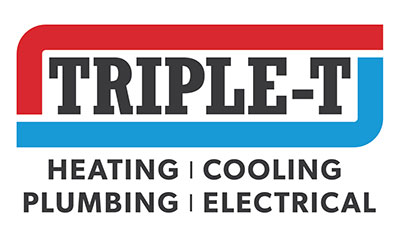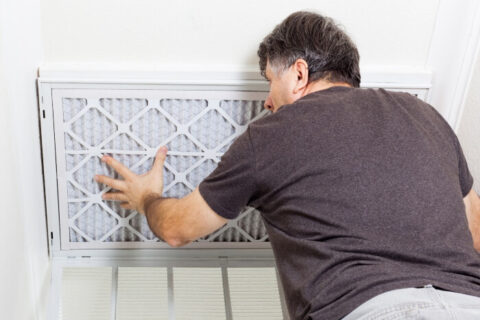Can Air Conditioners Produce Carbon Monoxide?
Nothing is more important to you than your family’s health and safety. That’s why you’re concerned about carbon monoxide (CO) gas in your home. Every year in the US, about 50,000 people visit the emergency room due to accidental CO poisoning, and nearly 500 people die. Rest assured that you can’t get carbon monoxide poisoning from running the AC. Having said that, several other sources of this dangerous gas may exist in your home.
Air Conditioners Do Not Produce Carbon Monoxide
CO gas is a byproduct of incomplete combustion. It is produced when you burn fossil fuels such as natural gas, oil, propane, kerosene, gasoline, charcoal, or wood for heating or cooking purposes.
AC units run on electricity, meaning they are not combustion appliances and do not produce carbon monoxide. The superior safety of electricity is one reason some people decide to switch to electric home heating.
However, keep in mind that a combustion appliance near the AC unit could leak CO gas. Carbon monoxide buildup in the garage could also get pulled into any ductwork installed there. In either case, running the air conditioner could circulate harmful carbon monoxide fumes around your home.
Sources of Carbon Monoxide
Any combustion appliance can produce carbon monoxide. Some of the most common systems used in residential settings include:
- Furnaces
- Boilers
- Water heaters
- Ovens and stovetops
- Fireplaces
- Wood-burning stoves
- Cars
- Lawn mowers
- Grills
- Generators
Under normal conditions, these appliances produce trace amounts of carbon monoxide, which is vented harmlessly to the exterior. However, running damaged combustion equipment or using appliances incorrectly may allow CO gas to build up inside, increasing the risk of carbon monoxide poisoning. Here are some of the most common ways CO gas can get trapped in your home:
- Cracked furnace heat exchanger: The heat exchanger is a metal chamber that transfers heat generated by a fuel source to the air in your home. If this chamber rusts and cracks, combustion fumes may escape, allowing carbon monoxide to mix with your indoor air.
- Backdrafting: Blocked chimneys, leaky vent pipes, and incorrectly installed exhaust systems can cause backdrafting, which forces fumes back into your home.
- Operating combustion appliances in enclosed spaces: Idling your car in the garage, running a generator in the shed, using a camping stove in a tent—these are incredibly dangerous activities likely to cause carbon monoxide poisoning.
Dangers of Carbon Monoxide Exposure
Unlike natural gas, which creates a mysterious rotten egg smell when it leaks into your home, carbon monoxide is colorless, odorless, and undetectable without a CO alarm. This has earned it the nickname “silent killer.”
When you breathe air saturated with carbon monoxide, CO molecules enter your bloodstream and prevent red blood cells from absorbing oxygen. This suffocates your brain, lungs, and other vital organs, causing potentially life-threatening consequences.
Long-term exposure to low levels of carbon monoxide can cause these symptoms:
- Dull headache
- Dizziness
- Weakness
- Nausea
- Flu-like symptoms without a fever
At high concentrations, CO gas causes more serious symptoms, such as:
- Vomiting
- Shortness of breath
- Abdominal and chest pain
- Confusion or memory loss
- Blurred vision and hallucinations
- Brain damage
- Heart problems
- Loss of consciousness
- Death
Do you have any mysterious health symptoms that disappear when you leave home? Have you noticed any other signs of a carbon monoxide leak? Did your CO alarm just go off? Evacuate your home immediately and call 911 for help. Do not reenter the building until emergency crews tell you it’s safe.
Carbon Monoxide Safety Tips to Remember
Here are the best things you can do to protect your family from CO gas leaks:
- Install carbon monoxide detectors: One on each floor is best, especially near sleeping areas. To prevent false alarms, position detectors at least 15 feet from combustion appliances, out of direct sunlight, and away from humid bathrooms. Also, test your CO detectors monthly and change the batteries once a year.
- Tune up your HVAC system annually: Schedule professional inspections for your furnace, water heater, fireplace, and ductwork every fall. While carbon monoxide doesn’t come from air conditioners, you should maintain this equipment once a year as well to ensure proper operation.
- Only use UL-listed appliances: When a product is UL-listed, this means the global product-safety certification company, Underwriters Laboratories, has rated it for safe performance.
- Ensure adequate ventilation: Check vents and flues regularly to keep them clear of bird’s nests, snow, and other obstructions.
- Use gas tools safely: Never operate fuel-burning equipment indoors, including the garage, unless vented properly. This means you should never leave your car running in the garage, even if the door is wide open. Also, keep generators and grills at least 20 feet from open windows and doors to prevent fumes from drifting inside.
Contact Triple T for HVAC Services
Even though your air conditioner is not a source of carbon monoxide gas, you should never let your guard down. After all, plenty of other HVAC equipment and household appliances can cause CO gas leaks. That’s why you should trust Triple T Heating, Cooling & Plumbing to conduct heating inspections this fall. We’ll get your Utah home’s HVAC system ready for winter so you can enjoy peace of mind all season long.
For more information about carbon monoxide gas or to schedule HVAC services with us, please call 801-798-7711 if you live in Utah County or 435-275-4011 if you’re a Washington County resident. You can also contact us online with any questions you have.


